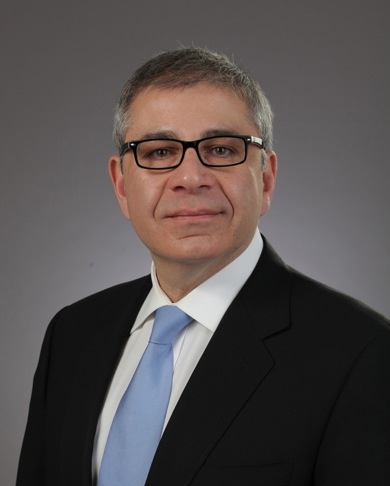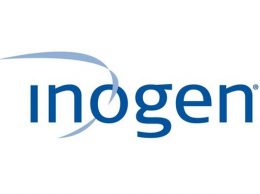Inogen’s new CEO looks to the future
IN THIS ARTICLE
- Banking & Finance Topic
- Jorge Mercado Author
By Jorge Mercado Friday, April 2nd, 2021

As life begins to regain a bit of the normalcy that existed before the COVID-19 pandemic, Goleta-based Inogen is ready to not only get back to its roots, but also lay the foundation for a new direction for the company.
Inogen, a medical device company specializing in portable oxygen concentrators, hired a new CEO on Jan. 27, Nabil Shabshab, who previously spent nine years working with another medical tech company, Becton Dickinson and Company.
In a recent interview with the Business Times, Shabshab said what attracted him to Inogen was the company’s bigger purpose in providing an accessible oxygen concentrator to those in need.
“Inogen has really punched above its weight in terms of the impact we’ve had with patients that have respiratory needs and especially oxygen therapy, but the runway that is ahead of the company is immense,” Shabshab said.

One of the ways he hopes to lead Inogen is by helping the company venture into becoming more of a respiratory therapy company, as opposed to simply providing oxygen.
“In addition to the strength and heritage we have in terms of serving patients in terms of oxygen needs, we want to be able to help them also in other aspects of their disease state of respiratory health,” Shabshab said.
Shabshab said one hope he has it to give Inogen some “clinical muscle” and creating a strong portfolio that helps Inogen differentiate itself. He also wants to grow the company “inorganically,” which means looking for acquisition opportunities.
Inogen has some flexibility in that aspect, as the company has cash and cash equivalents worth $231.2 million, and no outstanding debt, according to its most recent earnings report, released Feb. 24.
“It’s very well known that we do have some cash on the balance sheet that allows us the freedom and the flexibility to think about the inorganic aspects,” Shabshab said.
But Inogen’s main priority is still growing the portable oxygen concentrator market. Inogen has made plans to add more variety to its lineups of concentrators, integrating an non-invasive ventilation aspect for those who need it, while potentially expanding to different markets across the world.
“POC therapy is only 10% of total oxygen therapy,” Shabshab said. “That means there’s plenty of room left (to grow) and Inogen is the leader in that space and they were the preferred solution from a patient standpoint.”
Inogen saw lower demand from its customers in 2020 as a result of the COVID-19 pandemic, Ali Bauerlein, a co-founder and the company’s CFO, told the Business Times.
Most of its consumers stayed home, reducing their need for a portable oxygen concentrator.
The company responded by focusing on rentals of its concentrators. And, as demand from its consumers dropped, Inogen saw increased demand from hospitals, as supplies of stationary oxygen concentrators have been strained during the pandemic.
As a result, Inogen has made an effort to focus on rentals at the onset of care.
“Rentals are a great opportunity for patients to use their insurance benefits, and of course it’s a lot easier for them to afford it … so we do think it’s a great way for us to get patients to access our products,” Bauerlein said. “But we need patients to know about the product at the onset of care, so they can use those insurance benefits instead of receiving tanks.”
Total revenue for Inogen in 2020 was $308.5 million, down 14.8% from 2019, with the company suffering a net loss of $5.8 million, compared to net income of just over $20 million in 2019.
But, rental revenue grew 32.3%, primarily due to a 27.3% increase in patients on the service and an improved rental gross margin of 52.1% in 2020, compared to 34.1% in 2019.
In the fourth quarter alone, rental revenue was at $9.7 million, up 71% from the same quarter a year before.
Inogen’s stock price has improved in recent months, after taking a tumble in the summer and fall of 2020. On Oct. 1, Inogen shares closed at $28.79. The stock is up nearly 82% since then, closing at $52.52 on March 31.
“Over the last few months, people are excited about our success on the rental side of the business that produces more stability … and I think investors are really excited about what Nabil brings to the table and having the opportunity to look at the business with fresh eyes,” Bauerlein said.
Inogen is also preparing to move into its new headquarters as the pandemic continues to subside. The new 46,000-square-foot building is at 301 Coromar Drive, in a new portion of Cabrillo Business Park, very close to Inogen’s current Goleta location. The headquarters is home to 200 of the current 1,000 people Inogen employs.
Shabshab himself has not yet found his way to the Santa Barbara area. The new CEO is planning for a May arrival.
“I have never been to Santa Barbara but I’m excited to be with the team in our headquarters, become a part of the community and make it a home for me,” he said.











